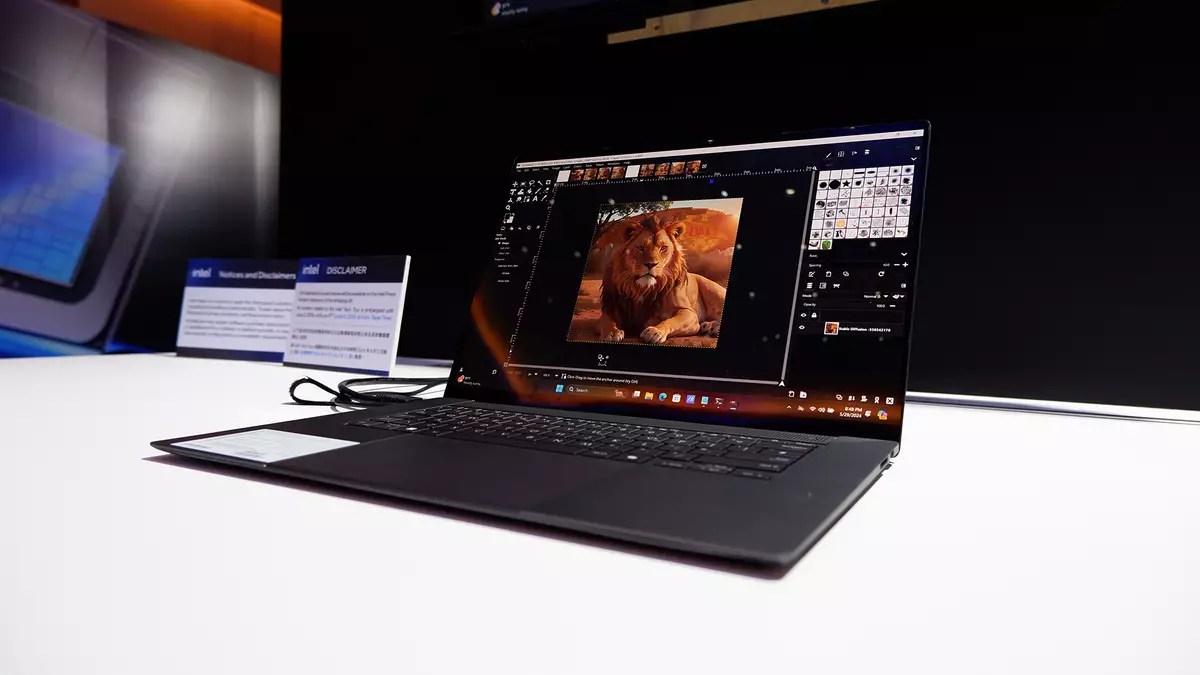The technology landscape is rife with developments that promise to enhance user experience, and Intel’s upcoming Lunar Lake mobile chips are quickly emerging as a pivotal breakthrough. Touted as the most efficient x86 processor ever designed, these chips have stirred excitement for their potential to create mobile devices that not only conserve battery life but also offer robust performance suitable for gaming and professional tasks alike. Central to this innovation is a partnership with BOE, which introduces its Winning Display 1Hz technology, raising the bar for display power management considerably.
At the core of this innovation lies an incredible advancement in display technology. Reports highlight that the integration of BOE’s display technology with Intel’s Intelligent Display Technology (IIDT) 2.0 creates pathways for substantial reductions in power consumption—up to 65%, as cited. This remarkable decrease is attributed to several clever features embedded within IIDT 2.0, including Autonomous Low Refresh Rate (ALLR), User-Based Refresh Rate (UBRR), and PixOptix. Such technology allows devices to tailor power usage by moderating the refresh rate based on user input and engagement.
In practical terms, this means that a user engaged in a video-viewing experience could enjoy a high refresh rate on one side of the screen while simultaneously jotting down notes or performing less demanding tasks on another portion at a reduced refresh rate. This dual refresh rate capability not only maximizes visual fluidity where it matters but also minimizes power draw during less intensive activities, thus employing battery life far more efficiently than previous generations of mobile technology.
The true brilliance of this technology lies in its adaptability. Advanced AI algorithms monitor and adjust the refresh rates dynamically, addressing user needs in real time. This strategic enhancement is crucial for mobile devices, particularly given how demanding high-performance features can be on battery life. Intel’s focus on AI-driven technology not only supports significant power saving but elevates user experience by ensuring that devices are responsive to user behavior without excess energy expenditure.
However, while the prospect of such savings is thrilling, the method by which these savings are achieved raises some questions. The report indicates that the astounding 65% reduction applies when the screen operates at a single Hertz. Such a refresh rate, while energy-efficient, may render the display unsuitable for most regular tasks, as most users expect much smoother interactions. The trade-off between power conservation and performance must be navigated judiciously to ensure that the user experience does not suffer due to overly aggressive power-saving measures.
With tech companies racing to outdo one another, the promise of achieving significant battery life—in one case, Asus claims its Vivobook S 14 can endure for 27 hours—is appealing. However, it remains to be seen how these theoretical advancements will play out in everyday use. Often, marketing figures present ideal conditions that fail to translate to real-world scenarios; environmental factors, specific workloads, and user habits can substantially alter performance.
Furthermore, there lingers the concern about the practical implications of a display system dynamically adjusting its refresh rate. For example, frequent fluctuations could result in a distracting user experience. The example of OLED burn-in protection mechanisms coming into play precisely when one seeks to maximize productivity illustrates how such interruptions can be counterintuitive. The balance between prolonging battery life and achieving an unobtrusive, seamless user experience is delicate and requires careful management.
Intel’s Lunar Lake initiative, alongside BOE’s innovative display technologies, heralds a promising future for mobile computing. The blend of robust performance and power efficiency encapsulated in these developments is a step forward in overcoming one of the most persistent challenges in mobile tech—the battery life dilemma. Optimizing how devices manage power based on usage patterns is a compelling evolution. However, as the tech giants continue to unveil increasingly complex technologies, the resulting user experience must remain central to the conversation. Only time will reveal whether these advancements will be seamlessly integrated into our lives, enhancing convenience while minimizing annoyance. Ultimately, the goal of technology should be to enrich human experience, not complicate it.


Leave a Reply